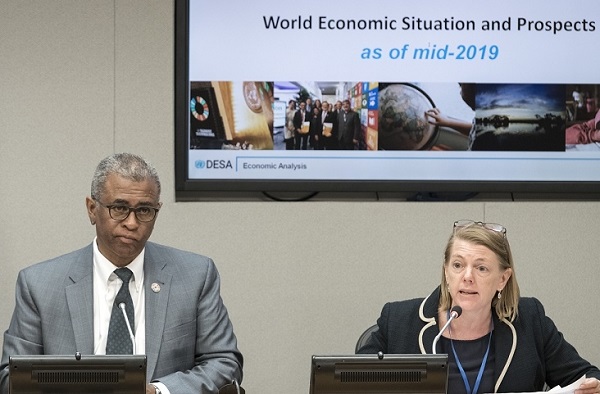
United Nations, Although the UN has downgraded India’s growth rate for the current fiscal year to 7 per cent, a cut of 0.6 percent from the projection made in January, it continues to be the world’s growth leader.
Despite the projected slowdown, “I would also point out that the forecast for India is among the highest in all of the countries, particularly the large economies,” Dawn Holland, the head of global economic monitoring, said on Tuesday during the release of the mid-year update to the World Economic Situation and Prospects report.
“Compared to global growth of 2.7 per cent, obviously this stands out among the very high rates of growth in the world,” she said. “We are still forecasting growth of 7 per cent in 2019 and 7.1 per cent in 2020.”
The report cut the projection for next fiscal year by 0.4 per cent from the 7.5 per cent made in January.
UN’s forecasts were lower than those made by the International Monetary Fund (IMF) and the Asian Development Bank (ADB) last month.
The IMF cut India’s growth projections for this year by 0.2 per cent from the 7.5 per cent made in January to 7.3 per cent. It projected next year’s growth at 7.5 per cent, though lower than the earlier 7.7 projection.
The Asian Development Bank said India’s growth rate would be 7.2 per cent this year and 7.3 per cent next year.
Holland said that demonetisation does not continue to significantly impact the economy.
“Demonetisation had a significant effect when it was initially introduced but seems to have passed through relatively quickly and we couldn’t say there is a very large hangover from that in the current growth figures,” she said.
The latest UN report cut global growth rate by 0.3 per cent for the current year from the January projection of 3 per cent to 2.7 per cent, and by 0.1 per cent for next year to 2.9 per cent.
Assistant Secretary-General and Chief Economist Elliot Harris blamed trade tensions and policy uncertainties for the cut. He said that the accelerating effects of climate change could further affect world economic growth.
China’s growth projection remains unchanged from January forecast of 6.3 per cent for this year and 6.2 per cent next year.
The US forecasts were cut from January by 0.2 per cent to 2.3 per cent for this year and by 0.1 per cent to 2.1 per cent for next year.
In South Asia, the report forecasts Bangladesh’s economy to grow by 7.1 per cent in 2019 and 2020. But Pakistan’s growth is expected to slow from 5.4 per cent in 2018 to about 4 per cent in 2019 and 2020 “amid fiscal, inflationary and domestic demand challenges”, the report said.
The report said that a slowdown in the European Union impacts Bangladesh because about two-thirds of its total exports go to that region, with a quarter concentrated in the slowing economies of Germany and the Britain.
To increase India’s growth, Holland said that it “should be focusing on increasing the private sector involvement in investment and facilitating access to finance for the private sector and small and medium size firms in particular, which is a barrier to faster growth in India”.









